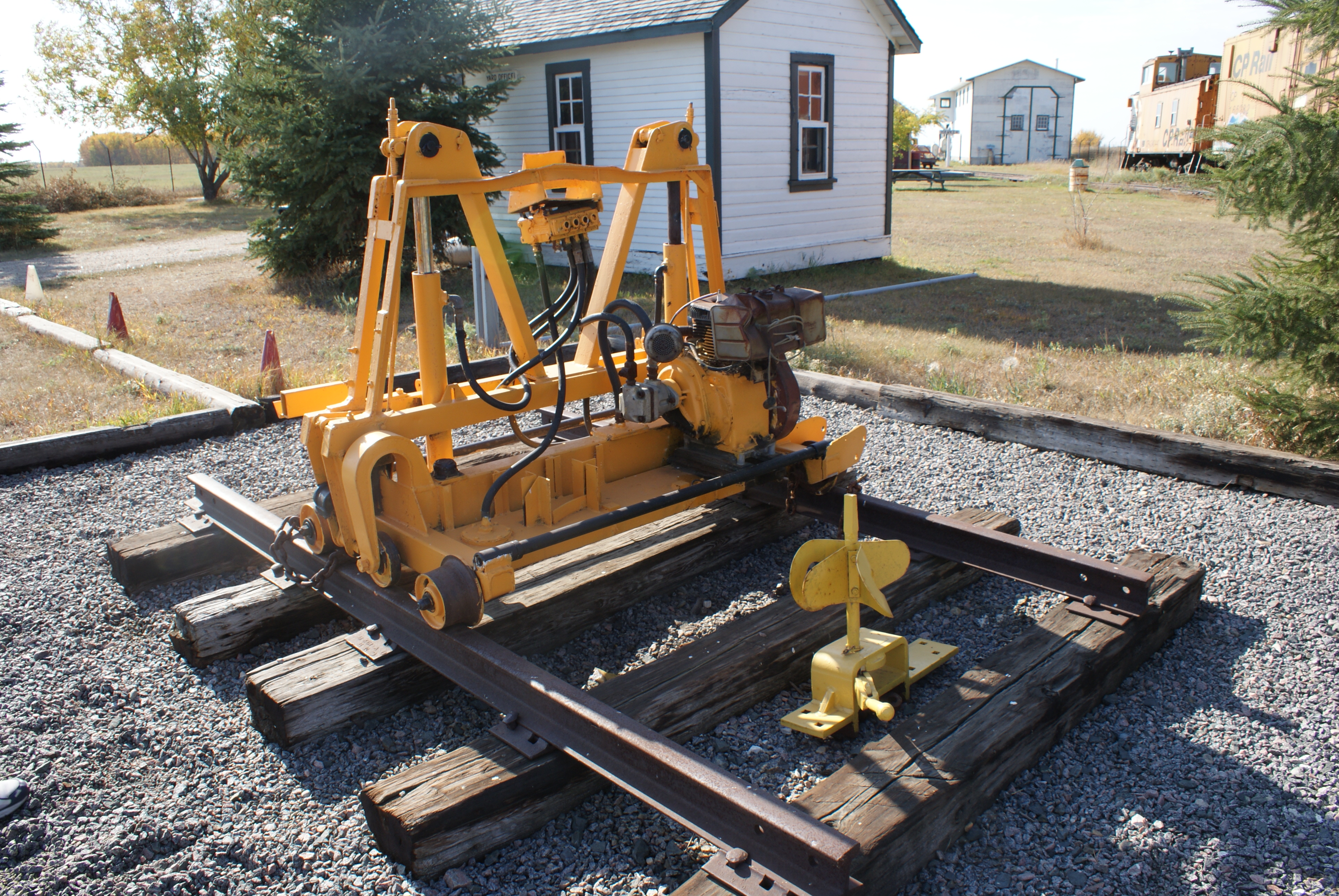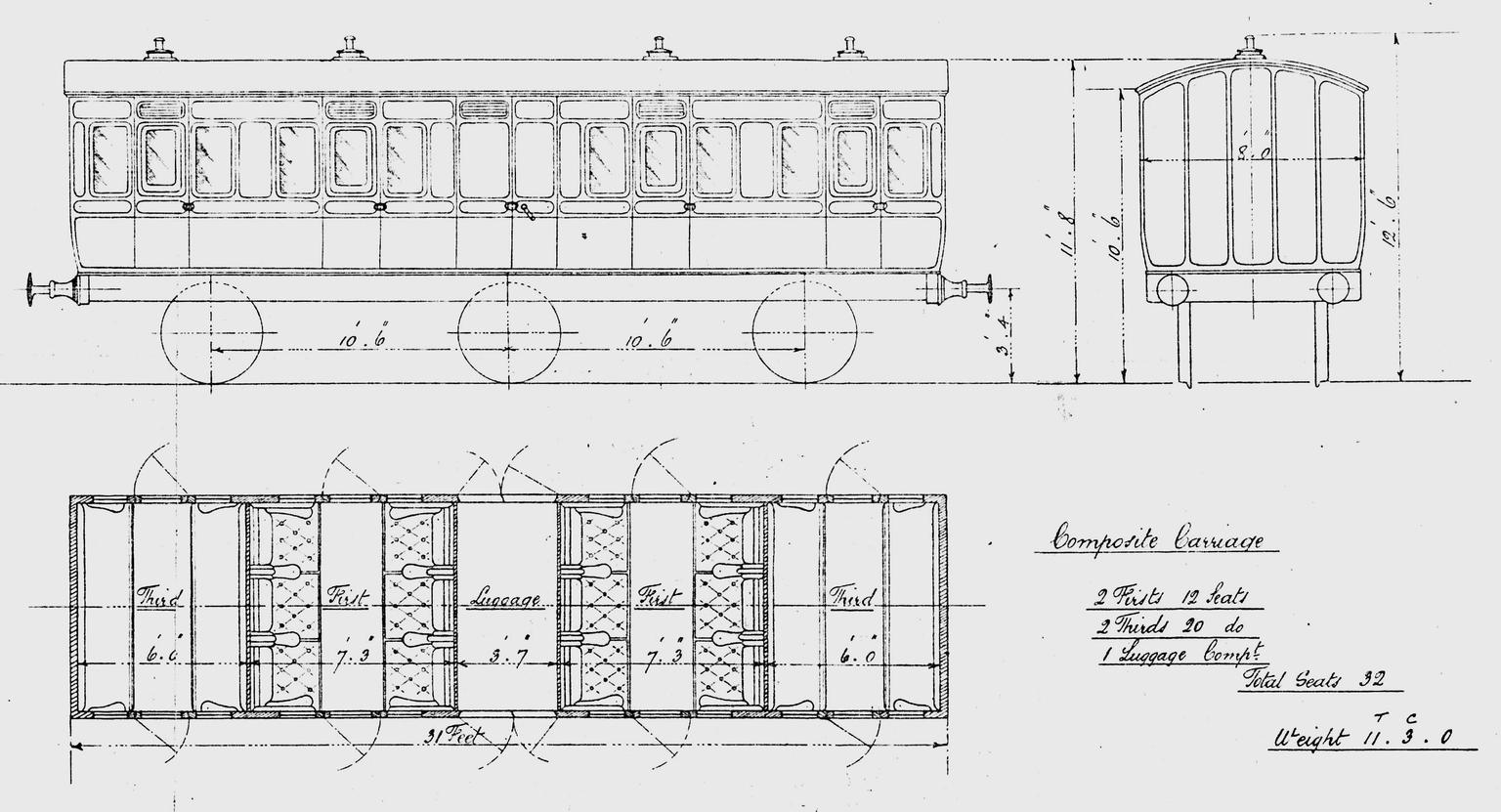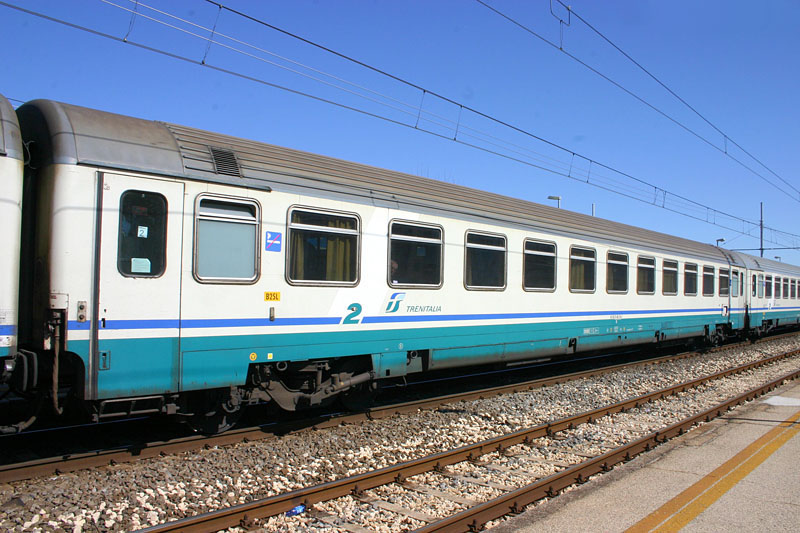|
List Of Railway Vehicles
This is a list of all types of vehicle that can be used on a railway, either specifically for running on the rails, or for maintenance or up-keep of a railway. General classes of railway vehicle * Freight car (US) * Goods wagon ( UIC) * High speed train * Locomotive * Multiple unit ** Diesel Multiple Unit ** Electric Multiple Unit * Passenger car or coach * Private railroad car * Railcar or Railbus * Rail motor coach * Road-rail vehicle * Rolling stock * Tilting train * Travelling Post Office Railway vehicles listed by usage Traction vehicles or propelled cars * Autorail * Cab car or Control car (rail) * Driving Van Trailer * Driving Brake Standard Open * Shunter or Switcher * Tank locomotive Passenger use * Baggage car * Bilevel car * Coach (rail) * Comet (railcar) * Compartment coach * Corridor coach * Couchette car * Dining car * Dome car * Observation car * Open coach * Parlor car * Shoreliner * Sleeping car * Slip coach * Superliner (railcar) Freight use Containe ... [...More Info...] [...Related Items...] OR: [Wikipedia] [Google] [Baidu] |
Vehicle
A vehicle (from la, vehiculum) is a machine that transports people or cargo. Vehicles include wagons, bicycles, motor vehicles (motorcycles, cars, trucks, buses, mobility scooters for disabled people), railed vehicles (trains, trams), watercraft (ships, boats, underwater vehicles), amphibious vehicles (screw-propelled vehicles, hovercraft), aircraft (airplanes, helicopters, aerostats) and spacecraft.Halsey, William D. (Editorial Director): ''MacMillan Contemporary Dictionary'', page 1106. MacMillan Publishing, 1979. Land vehicles are classified broadly by what is used to apply steering and drive forces against the ground: wheeled, tracked, railed or skied. ISO 3833-1977 is the standard, also internationally used in legislation, for road vehicles types, terms and definitions. History * The oldest boats found by archaeological excavation are logboats, with the oldest logboat found, the Pesse canoe found in a bog in the Netherlands, being carbon dated to 8040 ... [...More Info...] [...Related Items...] OR: [Wikipedia] [Google] [Baidu] |
Tilting Train
A tilting train is a train that has a mechanism enabling increased speed on regular rail tracks. As a train (or other vehicle) rounds a curve at speed, objects inside the train experience centrifugal force. This can cause packages to slide about or seated passengers to feel squashed by the outboard armrest, and standing passengers to lose their balance. Tilting trains are designed to counteract this by tilting the carriages towards the inside of the curve, thus compensating for the g-force. The train may be constructed such that inertial forces cause the tilting (''passive tilt''), or it may have a computer-controlled powered mechanism (''active tilt''). The first passive tilting car design was built in the US in 1937, and an improved version was built in 1939. The beginning of World War II ended development. Talgo introduced a version based on their articulated bogie design in 1950s, and this concept was used on a number of commercial services. Among these was the UAC Turbo ... [...More Info...] [...Related Items...] OR: [Wikipedia] [Google] [Baidu] |
Compartment Coach
A compartment coach is a railway passenger coach (US: passenger car) divided into separate areas or compartments, with no means of moving between compartments. The compartment coach should not be confused with the corridor coach which also has separate compartments but, by contrast, has a corridor down one side of the coach interior onto which the compartment doors open. English origins Originally compartment coaches were passenger coaches with several separate compartments in the same coach body, each compartment having its own doors on the side of the coach to enable passengers to board and alight. The compartment coach was developed at the very beginning of the railway era in England simply by placing a post coach body on a railway undercarriage. Compartment coaches were used across almost the whole of Europe and were built right up to the 1930s. On the European continent they were sometimes referred to as ''English coaches'' or coaches built to the ''English system''. E ... [...More Info...] [...Related Items...] OR: [Wikipedia] [Google] [Baidu] |
Comet (railcar)
The Comet railcar is a class of locomotive-hauled railcars that was first designed in the late 1960s by Pullman-Standard as a modern commuter car for North American rail lines. Later, the Comet moniker was adopted by NJ Transit for all of its non-powered single level commuter coaches. Additional series of cars bearing the Comet name, based on the original design, have since been built by Bombardier Transportation and Alstom. The successful design was adopted by numerous commuter agencies. History Comet I These cars were the first of the Comet series, built by Pullman Standard in 1970–73 for the New Jersey Department of Transportation and used the Erie-Lackawanna Railroad's diesel-hauled commuter services. These railcars were named after the Jersey Central train Blue Comet. These were considered state of the art at the time, due to their all-aluminum body shell construction as well as their use of head-end power (HEP). Their automated entrance doors, designed for use with l ... [...More Info...] [...Related Items...] OR: [Wikipedia] [Google] [Baidu] |
Coach (rail)
A passenger railroad car or passenger car (United States), also called a passenger carriage, passenger coach (United Kingdom and International Union of Railways), or passenger bogie (India) is a railroad car that is designed to carry passengers. The term ''passenger car'' can also be associated with a sleeping car, a baggage car, a dining car, railway post office and prisoner transport cars. The first passenger cars were built in the early 1800s with the advent of the first railroads, and were small and little more than converted freight cars. Early passenger cars were constructed from wood; in the 1900s construction shifted to steel and later aluminum for improved strength. Passenger cars have increased greatly in size from their earliest versions, with modern bi-level passenger cars capable of carrying over 100 passengers. Amenities for passengers have also improved over time, with developments such as lighting, heating, and air conditioning added for improved passenge ... [...More Info...] [...Related Items...] OR: [Wikipedia] [Google] [Baidu] |
Bilevel Car
A bilevel car (American English) or double-decker coach (British English and Canadian English) is a type of rail car that has two levels of passenger accommodation, as opposed to one, increasing passenger capacity (in example cases of up to 57% per car). The use of double-decker carriages, where feasible, can resolve capacity problems on a railway, avoiding other options which have an associated infrastructure cost such as longer trains (which require longer station platforms), more trains per hour (which the signalling or safety requirements may not allow) or adding extra tracks besides the existing line. Double deck trains are claimed to be more energy efficient, and may have a lower operating cost per passenger. A double deck car may carry up to about twice as many as a normal car, if structure and loading gauges permit, without requiring double the weight to pull or material to build. However, a double deck train may take longer to exchange passengers at each station, sin ... [...More Info...] [...Related Items...] OR: [Wikipedia] [Google] [Baidu] |
Baggage Car
A passenger railroad car or passenger car (United States), also called a passenger carriage, passenger coach (United Kingdom and International Union of Railways), or passenger bogie (India) is a railroad car that is designed to carry passengers. The term ''passenger car'' can also be associated with a sleeping car, a baggage car, a dining car, railway post office and prisoner transport cars. The first passenger cars were built in the early 1800s with the advent of the first railroads, and were small and little more than converted freight cars. Early passenger cars were constructed from wood; in the 1900s construction shifted to steel and later aluminum for improved strength. Passenger cars have increased greatly in size from their earliest versions, with modern bi-level passenger cars capable of carrying over 100 passengers. Amenities for passengers have also improved over time, with developments such as lighting, heating, and air conditioning added for improved passenge ... [...More Info...] [...Related Items...] OR: [Wikipedia] [Google] [Baidu] |
Tank Locomotive
A tank locomotive or tank engine is a steam locomotive that carries its water in one or more on-board water tanks, instead of a more traditional tender. Most tank engines also have bunkers (or fuel tanks) to hold fuel; in a tender-tank locomotive a tender holds some or all of the fuel, and may hold some water also. There are several different types of tank locomotive, distinguished by the position and style of the water tanks and fuel bunkers. The most common type has tanks mounted either side of the boiler. This type originated about 1840 and quickly became popular for industrial tasks, and later for shunting and shorter-distance main line duties. Tank locomotives have advantages and disadvantages compared to traditional locomotives that required a separate tender to carry needed water and fuel. History Origins The first tank locomotive was the ''Novelty'' that ran at the Rainhill Trials in 1829. It was an example of a ''Well Tank''. However, the more common fo ... [...More Info...] [...Related Items...] OR: [Wikipedia] [Google] [Baidu] |
Switcher
A switcher, shunter, yard pilot, switch engine, yard goat, or shifter is a small railroad locomotive used for manoeuvring railroad cars inside a rail yard in a process known as ''switching'' (US) or ''shunting'' (UK). Switchers are not intended for moving trains over long distances but rather for assembling trains in order for another locomotive to take over. They do this in classification yards (Great Britain: ''marshalling yards''). Switchers may also make short transfer runs and even be the only motive power on branch lines and switching and terminal railroads. The term can also be used to describe the workers operating these engines or engaged in directing shunting operations. Switching locomotives may be purpose-built engines, but may also be downgraded main-line engines, or simply main-line engines assigned to switching. Switchers can also be used on short excursion train rides. The typical switcher is optimised for its job, being relatively low-powered but with a high ... [...More Info...] [...Related Items...] OR: [Wikipedia] [Google] [Baidu] |
Shunter
A switcher, shunter, yard pilot, switch engine, yard goat, or shifter is a small Rail transport, railroad locomotive used for manoeuvring railroad cars inside a rail yard in a process known as Shunt (railway operations), ''switching'' (US) or ''shunting'' (UK). Switchers are not intended for moving trains over long distances but rather for assembling trains in order for another locomotive to take over. They do this in classification yards (Great Britain: ''marshalling yards''). Switchers may also make short transfer runs and even be the only motive power on branch lines and switching and terminal railroads. The term can also be used to describe the workers operating these engines or engaged in directing shunting operations. Switching locomotives may be purpose-built engines, but may also be downgraded main-line engines, or simply main-line engines assigned to switching. Switchers can also be used on short excursion train rides. The typical switcher is optimised for its job, be ... [...More Info...] [...Related Items...] OR: [Wikipedia] [Google] [Baidu] |
Driving Brake Standard Open
A Driving Brake Standard Open (DBSO) is a type of railway carriage in Great Britain, converted to operate as a control car; this is not to be confused with DVTs, such as those in InterCity 225 sets. Fourteen such vehicles, numbered 9701 to 9714, were converted from Mark 2F Brake Standard Open (standard class coaches with brake van) carriages. Modifications included adding a driving cab and TDM equipment to allow a locomotive to be driven remotely. Using a system known as push–pull, the driver in the DBSO can drive the locomotive, even though it is at the rear of the train. Operations The vehicles were converted in two batches. Numbers 9701–9710 were converted in 1979 for use on the newly introduced Glasgow–Edinburgh InterCity ScotRail push–pull service with specially modified Class 47/7 locomotives. A further four, 9711–9714, were converted in 1985/86. The fourteenth was a replacement for no. 9706, which was derailed and damaged beyond repair in the Polmon ... [...More Info...] [...Related Items...] OR: [Wikipedia] [Google] [Baidu] |
Driving Van Trailer
A Driving Van Trailer (DVT) is a Great Britain, British purpose-built control car railway vehicle that allows the driver to operate with a locomotive in Push-pull train, push-pull formation from the opposite end of a train. A key benefit of operating trains with DVTs is the requirement for fewer locomotives; for example, a second locomotive would otherwise have to join at the other end of the train after arrival at terminal stations to lead the train's onward journey. Unlike many other control cars, DVTs resemble locomotives, specifically British Rail Class 90, Class 90 for the 82/1 mark 3 series and British Rail Class 91, Class 91 for the 82/2 mark 4 series; thus when the train is operating in push mode, it does not appear to be travelling backwards. The vehicles do not have any passenger accommodation due to health and safety rules in place at the time of construction that prohibited passengers in the leading carriages of trains that run faster than . Historically, it was ... [...More Info...] [...Related Items...] OR: [Wikipedia] [Google] [Baidu] |











.jpg)